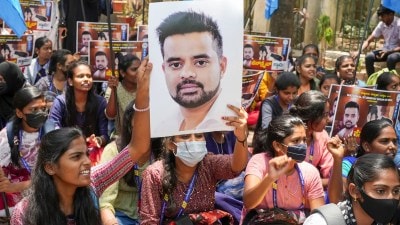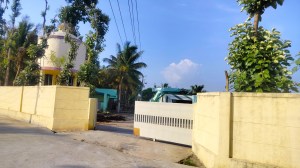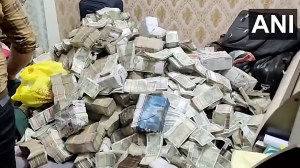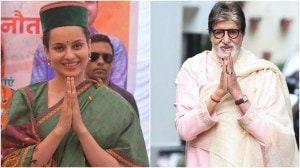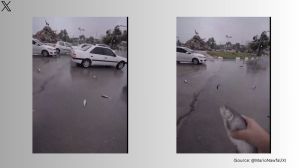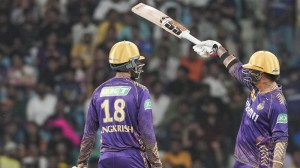- India
- International
As SC stays order on survey of Mathura site, the parallels across the three temple disputes
Appointment of a court commissioner to survey the site has been the first step in case of Ayodhya, Varanasi, and now Mathura
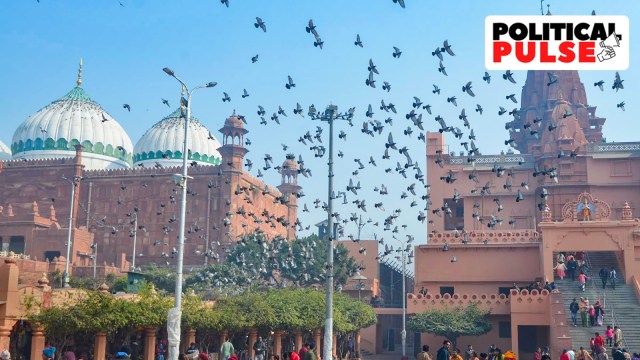 While the Supreme Court stay is a setback to the Sangh Parivar's Mathura plans, it may prove temporary. (Photo: PTI)
While the Supreme Court stay is a setback to the Sangh Parivar's Mathura plans, it may prove temporary. (Photo: PTI)Six days ahead of the consecration of the Ram Temple in Ayodhya, marking the end of the long dispute over the site, the Supreme Court Tuesday stayed an Allahabad High Court order that had allowed a court-monitored survey of another contested structure: the Shahi Idgah Mosque adjoining the Krishna Janmabhoomi temple in Mathura.
Along with Ayodhya and Kashi (Varanasi), Mathura is part of one of the Sangh Parivar’s oldest Hindutva projects, to free shrines revered by Hindus from “Muslim influence”.
While the Supreme Court stay is a setback to the Parivar’s Mathura plans, it may prove temporary. The case’s progress so far mirrors what has happened at the other two sites.
What are the disputes about?
In Ayodhya, the Babri Masjid stood atop what many Hindus believe is the birthplace of Lord Ram, an opinion that the Sangh Parivar began building into a sustained campaign starting the late 1980s, leading eventually to the mosque’s demolition in 1992.
In November 2019, the Supreme Court held the destruction “illegal” but awarded the land title to the Hindu side.

On January 22, Prime Minister Narendra Modi will lead the consecration ceremony for a temple at this site.
In Varanasi, the Gyanvapi Mosque stands cheek-a-jowl with the Kashi Vishwanath Temple. The Sangh wants the mosque brought down, saying it was built on the ruins of a temple. Meanwhile, the temple complex, which falls in the PM’s constituency, has seen a complete makeover.
In the case of Mathura, the Hindu petitioners who have gone to court argue that the Shahi Idgah Mosque was built atop the birthplace of Lord Krishna, on the orders of Emperor Aurangzeb, in 1670. Today, it lies adjacent to the Krishna Janmasthan Temple.
How did courts deal with the Ram Janmabhoomi-Babri Masjid dispute?
After the Ram Lalla idol mysteriously “appeared” at the disputed site, a Faizabad court on April 1, 1950, appointed a court commissioner to prepare a map of the disputed premises in Ayodhya. In June 1950, the commissioner, Shiva Shankar Lal, submitted a report, along with two site plans of the disputed premises.
In July 1989, all the suits related to the Ayodhya dispute were transferred to the Allahabad High Court, which constituted a three-judge Bench for the trial. On an application by the state of Uttar Pradesh, the High Court passed an interim order in August 1989, directing the parties to maintain status quo on the property in dispute.
In October 2002, the High Court issued directions to the Archaeological Survey of India (ASI) to carry out a scientific investigation and have the disputed site surveyed by Ground Penetrating Technology or Geo-Radiology. In February 2003, the ASI filed a report indicating “a variety of anomalies which could be associated with ancient and contemporaneous structures such as pillars, foundations, wall slabs and flooring extending over a large portion of the disputed site”.
A month later, the Allahabad High Court directed the ASI to undertake excavation of the disputed site, and the latter submitted its final report in August 2003.
On September 30, 2010, a full Bench of the Allahabad High Court delivered a judgment holding the three parties – Muslims, Hindus and the Nirmohi Akhara — joint holders of the disputed premises and allotted a one-third share to each of them in a preliminary decree.
On May 9, 2011, a two-judge Bench of the Supreme Court admitted several appeals and stayed the operation of the High Court judgment.
On November 9, 2019, the Supreme Court granted the entire disputed land in Ayodhya to deity Ram Lalla, and directed the government to allot an alternative five-acre plot to the Muslim side to build a mosque.
Where does the Varanasi temple dispute stay?
On April 18, 2022, the local court appointed a commissioner to survey the site. In May 2022, a videographic survey of the Kashi Vishwanath Temple-Gyanvapi mosque was completed. During the survey proceedings, a structure was found on the mosque premises which the Hindu side claimed was a “shivling”, and the Muslim side claimed was a “fountain”.
In July 2023, a “scientific survey” of the complex was ordered by the Varanasi district court to ascertain whether the mosque was “constructed over a pre-existing structure of a Hindu temple”. Pleas filed jointly by the Anjuman Intezamia Masajid Committee for the Gyanvapi Mosque and the UP Sunni Central Waqf Board against the same were rejected, and next month, the ASI began its survey amid tight security.
On December 18, 2023, the ASI submitted its report in the Varanasi court.
Where does the Mathura case stand?
In May last year, the Allahabad High Court transferred to itself all the suits on the Krishna Janmabhoomi-Idgah dispute.
On December 14, 2023, the Allahabad High Court admitted a petition seeking a survey of the disputed complex by a court-appointed commissioner. The next day, the Muslim side approached the Supreme Court, but at the time the apex court refused a stay on this, saying: “If any adverse order is passed, you can come.”
But on Tuesday, the Supreme Court stayed the order. It was hearing a plea of the Committee of Management, Trust Shahi Masjid Idgah, which submitted that the high court ought to have considered its petition for rejection of the plaint before deciding on any other miscellaneous applications (from the other side) in the suit.
The committee has sought rejection of the plea on the grounds that the lawsuit goes contrary to the Places of Worship (Special Provisions) Act, 1991, which puts a bar on the change of character of religious places post-1947, barring Babri Masjid.
May 06: Latest News
- 01
- 02
- 03
- 04
- 05


